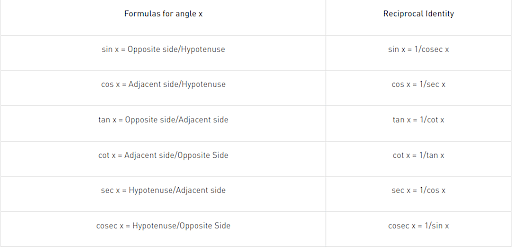If [$x$] denotes the greatest integer $\le x$, then the system of linear equations [$sin\,\theta$] x + [$-cos\,\theta$]y=0 [$cot\,\theta$] $x + y = 0$
- have infinitely many solutions if $\theta \in (\frac{\pi}{2} , \frac{2\pi}{3}) \cup (\pi , \frac{7 \pi}{6})$
- have infinitely many solutions if $\theta \in (\frac{\pi}{2} , \frac{2\pi}{3}$and has a unique solution if $\theta \in (\pi , \frac{7\pi}{6})$
- has a unique solution if $\theta \in (\frac{\pi}{2} , \frac{2\pi}{3})$and have infinitely many solutions if $\theta \in (\pi, \frac{7 \pi}{6})$
- has a unique solution if $\theta \in (\frac{\pi}{2} , \frac{2\pi}{3}) \cup (\pi, \frac{7\pi}{6})$
The Correct Option is B
Solution and Explanation
for infinite many solution
$\left|\left[\begin{array}{cc}\sin \theta \\ \cos \theta\end{array}\right] \quad \begin{array}{c}{[-\cos \theta]} \\ 1\end{array}\right|=0$
ie [sin $\theta$] = - [cos $\theta$] [cot $\theta$] (1)
when $\theta \in (\frac{\pi}{2} , \frac{2\pi}{3}) \Rightarrow \ \ sin \theta \in \bigg(0, \frac{1}{2}\bigg)$
$ \ \ \ \ \ \ \ \ \ \ \ \ \ \ \ \ \ \ \ \ \ \ \ \ -cos\theta \in \bigg(0, \frac{1}{2}\bigg)$
$ \ \ \ \ \ \ \ \ \ \ \ \ \ \ \ \ \ \ \ \ \ \ \ \ \ cot\theta \in \bigg(-\frac{1}{\sqrt{3}} , 0\bigg)$
when $\theta \in \bigg(\pi , \frac{7 \pi}{6}\bigg) \ \Rightarrow \ \ sin \theta \in \bigg(- \frac{1}{2} , 0\bigg)$
$ \ \ \ \ \ \ \ \ \ \ \ \ \ \ \ \ \ \ -cos\theta \in \bigg(\frac{\sqrt{3}}{2} , 1\bigg)$
$ \ \ \ \ \ \ \ \ \ \ \ \ \ \ \ \ \ \ cot \theta \in (\sqrt{3} , \infty)$
when $\theta \in (\frac{\pi}{2} , \frac{2\pi}{3})$ then equation (i) satisfied
there fore infinite many solution.
when $\theta \in \bigg(\pi , \frac{7\pi}{6}\bigg)$ then equation (i) not
satisfied there fore infinite unique solution.
Top Questions on Trigonometric Functions
- Evaluate: $ \tan^{-1} \left[ 2 \sin \left( 2 \cos^{-1} \frac{\sqrt{3}}{2} \right) \right]$
- CBSE CLASS XII - 2025
- Mathematics
- Trigonometric Functions
- What is \( \tan \left( \frac{1}{2} \left( \tan^{-1} x + \tan^{-1} \frac{1}{x} \right) \right) \)?
- Bihar Board XII - 2025
- Mathematics
- Trigonometric Functions
- \(\int \frac{\cos 2x}{\cos x + \sin x} dx \)
- Bihar Board XII - 2025
- Mathematics
- Trigonometric Functions
- In \( \triangle ABC \), if \( a = 13 \), \( b = 14 \), and \( c = 15 \), then find the values of:
(i) \( \sec A \)
(ii) \( \csc \frac{A}{2} \)- Maharashtra Class XII - 2025
- Mathematics & Statistics
- Trigonometric Functions
- Solve for \( x \), \[ 2 \tan^{-1} x + \sin^{-1} \left( \frac{2x}{1 + x^2} \right) = 4\sqrt{3} \]
- CBSE CLASS XII - 2025
- Mathematics
- Trigonometric Functions
Questions Asked in JEE Main exam
- The kinetic energy of translation of the molecules in 50 g of CO\(_2\) gas at 17°C is:
- JEE Main - 2025
- The Kinetic Theory of Gases
Given below are two statements I and II.
Statement I: Dumas method is used for estimation of "Nitrogen" in an organic compound.
Statement II: Dumas method involves the formation of ammonium sulfate by heating the organic compound with concentrated H\(_2\)SO\(_4\). In the light of the above statements, choose the correct answer from the options given below:- JEE Main - 2025
- Nitrogen
- A compound 'X' absorbs 2 moles of hydrogen and 'X' upon oxidation with KMnO4 - H⁺ gives the following products:

- JEE Main - 2025
- Organic Compounds and Hydrogenation
The motion of an airplane is represented by the velocity-time graph as shown below. The distance covered by the airplane in the first 30.5 seconds is km.

- JEE Main - 2025
- Kinematics
The least acidic compound, among the following is

- JEE Main - 2025
- Organic Chemistry
Concepts Used:
Trigonometric Functions
The relationship between the sides and angles of a right-angle triangle is described by trigonometry functions, sometimes known as circular functions. These trigonometric functions derive the relationship between the angles and sides of a triangle. In trigonometry, there are three primary functions of sine (sin), cosine (cos), tangent (tan). The other three main functions can be derived from the primary functions as cotangent (cot), secant (sec), and cosecant (cosec).
Six Basic Trigonometric Functions:
- Sine Function: The ratio between the length of the opposite side of the triangle to the length of the hypotenuse of the triangle.
sin x = a/h
- Cosine Function: The ratio between the length of the adjacent side of the triangle to the length of the hypotenuse of the triangle.
cos x = b/h
- Tangent Function: The ratio between the length of the opposite side of the triangle to the adjacent side length.
tan x = a/b
Tan x can also be represented as sin x/cos x
- Secant Function: The reciprocal of the cosine function.
sec x = 1/cosx = h/b
- Cosecant Function: The reciprocal of the sine function.
cosec x = 1/sinx = h/a
- Cotangent Function: The reciprocal of the tangent function.
cot x = 1/tan x = b/a
Formulas of Trigonometric Functions:
